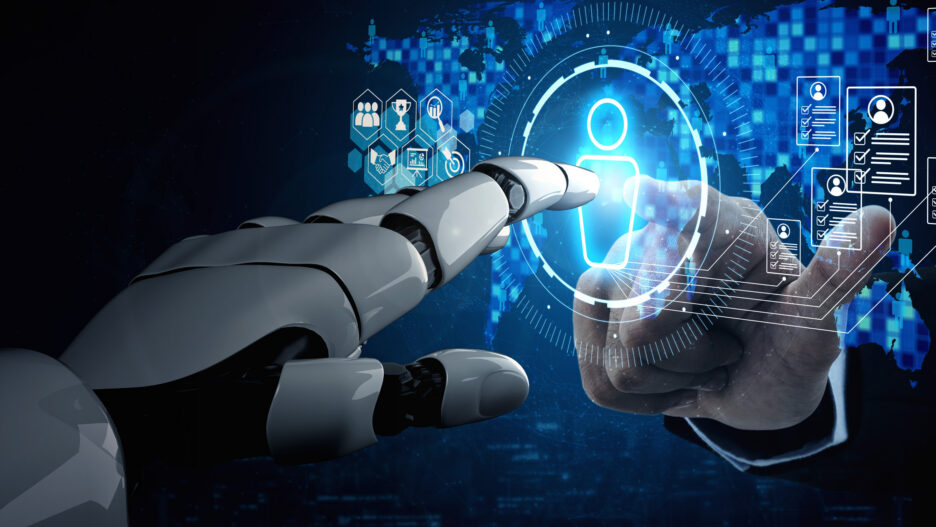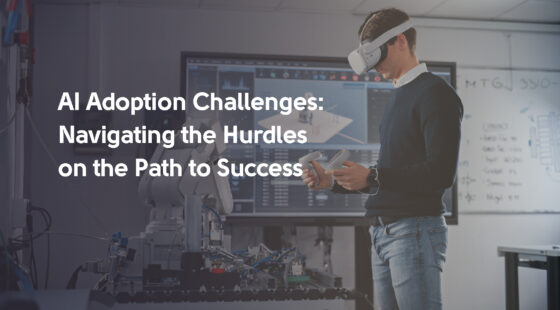Agentic AI trends in 2025 are reshaping how enterprises design and run digital operations. Unlike traditional assistants that respond to prompts, agentic AI systems pursue goals autonomously: they plan, call tools and APIs, coordinate with other agents, and act, while keeping a human in the loop for oversight. For leaders, the promise is concrete: faster care coordination and better quality assurance on one side; more resilient supply chains, proactive maintenance, and lights-out processes on the other.
What makes this year different is the combination of mature foundation models, reliable orchestration frameworks, and a clear business push toward end-to-end automation with governance.
In this article, we define agentic AI, explain why it’s emerging now, map the most important trends for 2025, outline the risks and controls that matter in regulated environments, and close with practical steps to pilot, measure ROI, and scale.
What is Agentic AI?
Agentic AI refers to systems that pursue goals and take autonomous actions to achieve them: planning steps, calling tools and APIs, and adapting as conditions change. In other words, yes, they generate a reply, but they also decide and act toward an outcome with limited supervision.
This shift is possible because large AI models now power “agents” that can automate complex, multi-step tasks on a user’s behalf, such as gathering information across systems, transforming it, and completing transactions, rather than waiting for a human to orchestrate every step.
A helpful way to distinguish agentic AI from traditional assistants: chatbots are mostly reactive (they answer what you ask). Agentic systems are proactive and goal-directed; they plan, reason, and iterate until the task is done. They can coordinate multiple actions, interact with external applications, and adjust plans based on feedback.
Modern foundation models and tool-use capabilities make this practical at scale. Leading platforms explicitly describe an “agentic era,” where models plan and execute through tool calls and orchestration layers, with humans providing oversight where needed.
Agentic AI is about delegating outcomes, not just prompts; systems that can plan, act, verify, and report back, while remaining governable.
Advances in frontier models
In 2025, leading models don’t just “chat.” They plan steps, call tools, browse, and even operate a computer, which makes goal-seeking behavior practical. OpenAI’s Responses API and Agents SDK formalize tool use (function calls, web search, document/file search) and task execution, while Operator demonstrates computer use for real UI workflows.
Anthropic added first-party tool use and computer use for Claude, and Google’s Gemini 1.5 pushed long-context to the million-plus-token range (with 2M access for developers), enabling stateful multi-step tasks over large corpora. Together, these upgrades make agents far more capable than they were a year ago.
Maturing multi-agent frameworks
Open frameworks now make it straightforward to design planners, executors, reviewers, and human-in-the-loop handoffs. LangGraph documents multi-agent patterns (plan-and-execute, routing, handoffs), and Microsoft’s AutoGen provides an event-driven framework for agent-to-agent cooperation. Earlier open projects like AutoGPT and BabyAGI helped popularize autonomous task planning and continue to influence modern patterns.
As established, Microsoft’s AutoGen documents multi-agent patterns (with human participation when needed), while LangChain’s “plan-and-execute” agents formalize planning for harder tasks. Together, these ecosystems shorten the path from prototype to production.
More compute + enterprise demand for automation
Finally, adoption momentum means organizations are ready to operationalize agents rather than just experiment. McKinsey reports that regular generative-AI use rose from 65% in 2024 to 71% in 2025 across business functions, a signal that the ecosystem (people, process, and platforms) can sustain agentic patterns, not just one-off pilots.
On the supply side, hyperscale investment in AI infrastructure continues to surge; for example, NVIDIA reported $41.1B in data-center revenue in Q2 FY2026 (up 56% YoY), underscoring sustained demand to train and run agentic systems.
In parallel, production monitoring now targets agent-specific concerns (quality, safety, latency, token-cost tracking), with vendors offering end-to-end tracing for chains and agent workflows, features that became generally available and expanded through 2024–2025.
Bottom line: richer model capabilities, production-grade tooling, and firmer governance are converging. That’s why agentic AI is moving from prototypes to dependable, goal-seeking systems in 2025.
Key Agentic AI Trends for 2025
Autonomous business workflows
Agents are increasingly executing real tasks end-to-end: searching, filling forms, updating records, and closing loops, rather than just replying in text. Major platforms now ship first-class “agent” capabilities: OpenAI’s Responses/Operator stack enables computer use and web task execution, while AWS Bedrock Agents orchestrate multi-step actions across company systems and knowledge bases. Google’s Vertex AI adds Agent Builder/Agent Engine to wire tools and run agents in production. Together, these make practical automation of support, analytics, and campaign ops feasible.
Multi-agent collaboration
Instead of one general agent, teams are deploying swarms of specialized agents, planners, executors, and reviewers that negotiate and hand off work. Microsoft’s open-source AutoGen formalizes agent-to-agent cooperation (with optional human participation), while LangGraph documents multi-agent workflows and planning patterns (“plan-and-execute”) now used in production. Cloud providers are also demonstrating multi-agent patterns for complex business questions.
AI + APIs/tools integration
The shift from “chatbot” to “doer” hinges on secure tool calls and standardized connections. OpenAI’s Agents SDK and tool/function calling make deterministic actions routine; Google’s Vertex AI exposes tool catalogs for database/API calls; and Anthropic’s Model Context Protocol (MCP) has emerged as an open standard many vendors are adopting to connect agents to data and systems. This stack turns intent into API calls across CRMs, ERPs, and cloud services.
Human-in-the-loop orchestration
As autonomy grows, oversight is becoming a design feature. NIST’s AI Risk Management Framework (AI RMF) provides a governance backbone: GOVERN, MAP, MEASURE, MANAGE, now widely referenced for production AI. On the engineering side, LangGraph and similar tools bake in human approval and moderation steps to keep agents on-policy, while vendor guides emphasize pre-deployment evaluations and runtime observability as standard practice.
Personalized AI agents (grounded in your data)
Enterprises are standardizing on Retrieval-Augmented Generation (RAG) to personalize agents with company and user data without retraining foundation models. Managed offerings (Google Vertex AI RAG Engine, Azure AI Search with RAG patterns) provide ingestion, vector/hybrid search, and augmentation pipelines so agents answer with up-to-date, verifiable context.
Governance & ethics challenges
With tool access, the blast radius of mistakes grows. Security baselines now include the OWASP Top 10 for LLM Applications (prompt injection, insecure output handling, model DoS, supply-chain risks), plus threat modeling with MITRE ATLAS for adversary tactics against AI systems. As established earlier, on the compliance side, the EU AI Act is law, with penalties up to €35M or 7% of global turnover for certain violations, which is pushing teams to log, evaluate, and gate agentic actions from day one.
Bottom line: 2025’s “agentic” shift is not only about smarter models; it’s about tool use + orchestration + governance reaching production grade so agents can plan, act, and verify safely across real business systems.
Bonus trends:
1) Tool-connected agents that execute end-to-end workflows
Agents increasingly act through APIs and tools, creating tickets, querying ERPs/CRMs, or running searches, rather than just replying in text. This is now first-class across major platforms (OpenAI’s Responses API; Gemini/Vertex AI; Anthropic “tool use”), which formalize function-calling and orchestration so models can plan steps and call tools deterministically.
2) Long-context models enable sustained, stateful tasks
Longer windows let agents reason over entire case files, long logs, or multi-system traces without constant chunking. Recent releases expanded context dramatically (e.g., Llama 3.1 to 128K; Claude Sonnet 4 up to 1M tokens), which reduces brittle memory hacks and improves multi-step reliability.
Challenges & Risks (and how to stay in control)
Agentic systems amplify the usual LLM risks because they don’t just answer…they act. Two problem areas tend to show up first: reliability under real-world complexity, and security once agents are wired into tools and data.
Reliability & controllability. Modern agents plan multi-step work, call external tools, and update their own plans. Without guardrails, small reasoning errors can cascade into bigger failures. This is why formal evaluations for agent behavior have become a priority: the UK AI Safety Institute’s open-source Inspect framework includes suites that probe agentic tasks (planning, tool use, multi-step reasoning) and harmful behavior (e.g., AgentHarm), giving teams a structured way to test before and after deployment.
Security exposure. Once an agent can call tools and APIs, classic application threats meet new LLM-specific ones. The OWASP Top 10 for LLM Applications highlights issues that are directly relevant to agentic patterns, prompt injection, and insecure output handling (agents following hostile instructions or emitting text that downstream systems execute), training-data poisoning, model denial of service (cost/latency blow-ups), and supply-chain vulnerabilities across models, frameworks, and datasets. These are now the baseline risks teams are expected to mitigate.
For a threat-intelligence view, MITRE ATLAS catalogs adversary tactics and techniques against AI systems, useful when you’re mapping where agents touch sensitive data, external content, or third-party tools. Combining OWASP’s control checklist with ATLAS’s threat landscape helps engineering, security, and risk teams reason about realistic attack paths (from prompt-based manipulation to data exfiltration or poisoning).
Compliance & governance. Regulation is also sharpening. As mentioned earlier, the EU AI Act entered into force in 2024 and sets maximum penalties of €35 million or 7% of global annual turnover for certain violations (with other tiers at €15 million/3%). That’s an incentive to bake oversight, logging, and evaluations into agent pipelines from day one, not bolt them on later.
On the “how,” frameworks like NIST provide a practical structure: GOVERN, MAP, MEASURE, MANAGE.
- Teams use it to define roles and policies (GOVERN)
- Understand use-case/context and risks (MAP)
- Quantify performance and safety with evaluations and metrics (MEASURE)
- Operationalize mitigations and monitoring (MANAGE).
NIST’s online Playbook adds concrete actions aligned to each function, which is helpful when translating policy into engineering work.
What businesses should do now:
- Start with a small, scoped pilot that proves value quickly. Pick one high-leverage workflow, define 2–3 success metrics (for example, resolution time, quality score, and cost per interaction), and keep a human approval step for actions that touch customers or money. Build an evaluation harness from day one so you can test plans, tool calls, and multi-step reasoning before and after launch; the UK AI Safety Institute’s Inspect framework is purpose-built for agentic and tool-use evaluations and is actively maintained.
- Treat governance and monitoring as first-class workstreams, not add-ons. Structure policy and engineering work across GOVERN, MAP, MEASURE, MANAGE, and lean on the official AI RMF Playbook for concrete actions per function. In production, instrument your agent with end-to-end observability so you can trace chains, measure latency and quality, and watch token spend.
- Bake security and compliance into the design. Map threats monitoring prompt injection, insecure output handling, model DoS, and supply-chain risks, which are directly relevant once agents call tools. Use MITRE ATLAS to think through adversary tactics specific to AI systems. If your deployments touch the EU, align early with the EU AI Act; penalties are hefty, which is a strong incentive to log, evaluate, and gate high-risk uses.
- Upskill the team around the new stack. Developers and product owners should be comfortable with tool-use patterns, retrieval-augmented generation, and evaluation workflows; security teams should train against the OWASP/ATLAS threat models and practice red-teaming agents that operate over external content and APIs. The goal is shared fluency, so operations, security, and product make consistent trade-offs as you scale.
- Evaluate ROI and risk continuously, not just at kickoff. Establish a pre-pilot baseline, then monitor your production metrics alongside cost telemetry (requests, tokens, storage, and retrieval). Adoption data shows organizations are moving beyond pilots, which raises the bar on measurement. Observability platforms now expose the needed inputs (quality, latency, token usage) to support that cadence.
Moving Agentic AI from Concept to Practice
What’s new in 2025 isn’t just bigger models; it’s the convergence of tool use, orchestration, and governance that lets systems plan, act, and verify against business goals. The opportunity is meaningful: end-to-end workflow automation, faster decisions, and sustained quality, provided reliability, security, and compliance are designed in from the start.
The path forward is pragmatic: scope a focused pilot, instrument it with evaluations and observability, enforce clear guardrails, and expand in measured steps. Treat governance and measurement as ongoing disciplines, not one-time checkboxes. With that approach, agentic AI evolves from an experiment into a dependable capability that compounds value over time.
Svitla Systems brings end-to-end engineering to agentic initiatives: data pipelines and RAG, model/tool orchestration, production monitoring, and security patterns aligned to recognized frameworks. The focus is on practical outcomes: shorter time-to-value, predictable costs, and systems that are auditable and safe to scale.
If a specific workflow comes to mind, start with a short discovery and a tightly scoped pilot plan. From there, it’s about building the right rails, so your agents stay effective, governable, and ready for production growth.




![[Blog cover] Agentic AI vs traditonal automation](https://svitla.com/wp-content/uploads/2025/09/Blog-cover-Agentic-AI-vs-traditonal-automation-560x310.jpg)